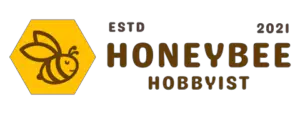Bee skeps are a traditional and iconic beehive, typically constructed as an upturned, woven basket under which bees build their colonies. Their design is simple and organic — you can even make one yourself!
What Is A Bee Skep?
A skep resembles an upturned basket with a small opening near its rim. This opening is the front door to the bee house. Within a skep, bees construct their home in whatever manner they prefer, with little to no human interference.
The noun skep comes from the old Norse word skeppa — meaning basket – which gives you a pretty good indication of what a skep is! Woven from wicker, coiled rye straw, or thick rope, skeps are baskets for housing bees.
How Do Beekeepers Use Bee Skeps?
Bee skeps were one of the first constructed hives for keeping bees.
Beekeeping traditionalists, eccentrics, hobbyists, and experimental archaeologists are likely to be engaged in skep beekeeping today.
Beekeepers can learn about hive construction, preferences, and the habits of bees by housing them in skeps.
Modern beekeepers will often have a skep on hand for collecting swarms and even use them to enhance their honeybee habitats.
How Honey Is Harvested From A Bee Skep
A common misconception is that the bees must be killed to harvest honey from a bee skep basket.
This is due to a brutal method described in the fantastically named 1623 treatise on beekeeping, The Feminine Monarchy. Luckily for bees and their admirers, there are several non-lethal methods for honey harvesting from skeps.
Small sections of honeycomb can be cut from the sides of the bee skep to replenish a home apiarist’s honey pot. Traditionally, a small basket called an eke was attached to the top or bottom of a skep and removed for honey harvesting.
If you want to harvest all the honey from a skep beehive at once, I recommend the following method:
- An empty skep can be fixed to the bottom of a full skep — basket brim to basket brim. This double-skep is flipped upside down, and the beekeeper drums gently and steadily against the full bottom skep.
- Driven by the drumming, the bees climb into the empty top skep. The previously full skep is then free to be harvested for honey, wax, and brood.
Are Bee Skeps Effective?
Traditional bee skeps have a long history of use, which is a testament to their efficacy and practicality.
At the same time, they are not the standard type of hive used by modern beekeepers. Most beekeepers use modern Langstroth vertical or horizontal hives with movable frames.
Skeps are not the most commercially efficient hive design, but they are beloved by many beekeepers and their bee colonies.
Disadvantages Of Using Skeps For Honey Bees
The primary disadvantage of skeps is that the brood comb cannot be easily inspected.
Checking on brood comb is a common practice amongst modern beekeepers, allowing for the early identification of diseases or parasites.
Skep enthusiasts employ several alternative methods to monitor threats to bee colonies without having to inspect the brood comb.
Can You Still Use Bee Skeps Today? Are Bee Skeps Illegal?
Skeps are unwelcome in the many US jurisdictions that only allow hives with movable frames. If you are interested in skeps, check the regulations in your area or contact a local beekeeper for advice.
How To Catch Swarms Using A Skep
Catching a swarm is very straightforward in theory: locate a swarm of homeless bees and put them in your skep! In practice, it requires decisiveness and know-how.
- First, scoop several bees into your skep — ideally, the queen bee will be amongst this group. If the swarm is on a tree branch, place the skep under the swarm and give the branch a firm shake. Most of the bees will fall inside the skep.
- Then, place your skep beside the swarm, with the brim propped up just enough to allow a bee clearance. If the queen is inside your skep, the rest of the swarm will follow her pheromones and clump around her in the skep’s ceiling.
There is a certain knack and skill required to pull this off. Therefore, it’s often best to find a local beekeeper that uses skeps on their apiary to teach you the intricacies of catching a swarm of bees.
How To Make A Straw Bee Skep
Skeps are traditionally made by skeppers, a job title that survives (like Smith or Cartwright) as a surname today. These days, you are more likely to find a hobbyist or experimental archaeologist weaving a skep. Here’s one method of skep-making:
Materials
Two traditional tools (both can be made at home) are needed:
- Cow horn guide
- Hollow turkey bone needle.
Traditionally, materials would vary depending on what could be easily gathered locally. We will use materials that are simple to acquire commercially:
- Thatching straw
- Lapping cane
Directions
To build a skep, you want to form a basket by coiling and binding the straw. Bundle your straw and feed it through your horn guide — this guide helps you assess and maintain an even thickness of straw.
The beginning of your skep will be a tight spiral, forming the belly of a basket — or the top of your skep.
The coiled straw is bound together by large tight stitches of lapping cane, fed through your hollow needle.
Continue to spiral out from the belly of the basket, forming the dome roof and walls of your skep. Skeps vary in size — it’s up to you and your needs.
The Bottom Line
Skeps are a functional and beautiful part of modern and historical beekeeping. They are legal in some US jurisdictions, though it’s best to check whether that’s the case for you!
If you already have some beekeeping experience, skeps can be an excellent way to expand your knowledge of the craft.

